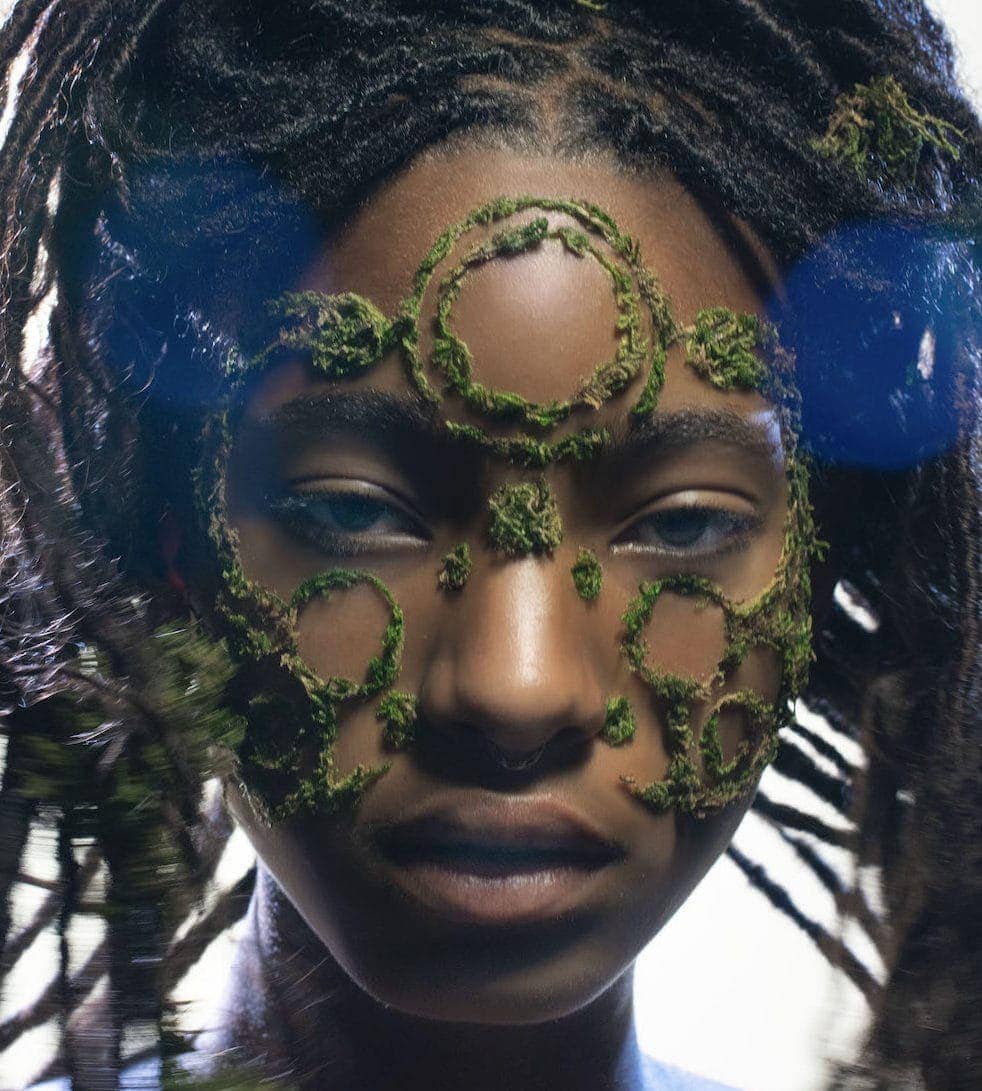

Furmaan’s idiosyncratic style has played a paramount role in paving their road to recognition. Their fascination with nature is a reference that is abundant throughout their practice, and repeated motifs can be found in works that are years apart in conception. This botanical influence, which utilizes both imitations and mutations of elements in nature, was partly down to a break-up of a long-term relationship during their second year at Uni, and partly developed through Furmaan’s upbringing in Glasgow.
“I was in such a crisis, my tutor was consoling me and told me, ‘it’s spring now and the flowers will bloom’. It’s soppy, but that really touched me and stuck with me that things will grow and change again.” Other unchanging influences are the Lord of The Ring’s and Harry Potter, due to a family obsession with the mystical novels. “It’s funny how I’ve come back to it all,” Furmaan says, “and I’ll realise how things have been drawn from that one movie, or that one castle at the very end of my street that I told people I grew up in.”
This botanical influence, which utilizes both imitations and mutations of elements in nature, was partly down to a break-up of a long-term relationship during their second year at Uni
Having been on the same course as Furmaan, I have had the pleasure of seeing their rapid DIY approach first-hand; watching them shooting around the workshop, creating entire structures before I’d drilled two bits of wood together. But Furmaan is having to alter their self-admittedly slap-dash process as a result of entire teams now being involved in projects. “I was so used to making things to just use them in photographs which I was taking. I’m quite good with post-production, so I knew what I needed to do to make things look like they were something else.”
“But now the objects have to look more how they’re going to look in the outcome. I still have moments when clients turn up to set and they’re worriedly staring at all of this timber piled on to the floor, but it always works out.”


Navigating new inputs in projects in a professional capacity has been a shift for Furmaan, but they have also returned to CSM after an industry year, and find themselves on a course where the “commercial” realm they are working within is looked down upon. “Where I’m trying to come from is a point of accessibility. If you look at a fashion image, anyone can see that and have an immediate reaction, just like they can with images on Instagram.”
“But the tutors want you to produce work for gallery settings. I think about if my mum came and saw the work, how would she feel, what would she get out of it, and isn’t that the most important thing to bridge those gaps between?’ In critiques with peers, Furmaan is met with comments that their work is becoming too much of a spectacle, due to the attention it’s garnering. “But that’s why we make art,” Furmaan asserts, “and there’s nothing wrong with wanting attention. Especially as a queer person and a brown person, we must be able to garner that.”
The wonder of the internet was paramount in forging Furmaan’s identity, acting as a portal for new worlds that were distant from the strict Muslim community they grew up in
Unlike many emerging creatives, Furmaan has been lucky in working on large-scale projects where their vision has been honoured rather than compromised. ‘I think it’s because of the visual language that I’ve made for myself. I’ve got a very particular style and I’m quite aware of that, and people hire me because I can do that one thing.’ The downside to this singular way of working, Furmaan notes, is not being considered for every potential opportunity. But there are few complaints, ‘It’s a nice pigeon hole to be in because people want it and it’s working for me.’.
The wonder of the internet was paramount in forging Furmaan’s identity, acting as a portal for new worlds that were distant from the strict Muslim community they grew up in. “When I was younger and living at home I had to have two different identities. I used to hide in my room at night and do crazy photoshoots and put them on Tumblr and Facebook, usually to cause a stir. I’d get death threats because of it.”


“But that was my first relationship with fashion, by creating those Worlds for myself. I’m doing the same thing with making sets now as I was back then, creating those worlds but taking myself out of it, creating manifestations of who I wanted to be. It all existed online and now it exists in real life.”
This came full circle during Furmaan’s time living and working in LA. “I met so many people who I used to chat with on Tumblr, who I’m friends with now and they’re all pop stars!” Their experience in LA was “lifechanging”, and they are now hoping to relocate there graduating, despite some pre-conceptions. “At first, I was laughing at the people there, thinking they were so lame, and a few weeks later I became one of them, waking up in the morning to go to yoga and hiking after work.”
There’s a boundary-pushing, ceaseless power rooted deep within Furmaan, from their childhood experiences
There’s a boundary-pushing, ceaseless power rooted deep within Furmaan, from their childhood experiences. “I didn’t have a white friend until I was 12 years old, which is a polarising environment to grow up in as a queer person. But I always knew – not that I was smarter – but I was thinking of bigger things than my family was, which pushed me to keep going.”
And keep going they will, having already achieved such accomplished heights, who knows what big things are next for this one-off creative.


